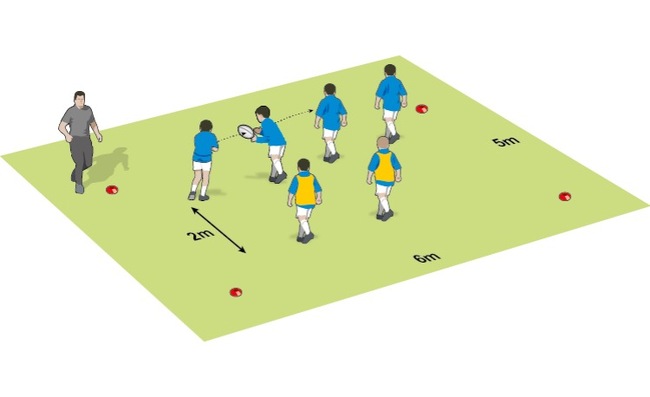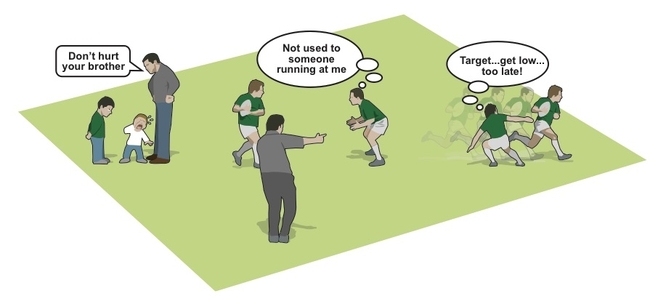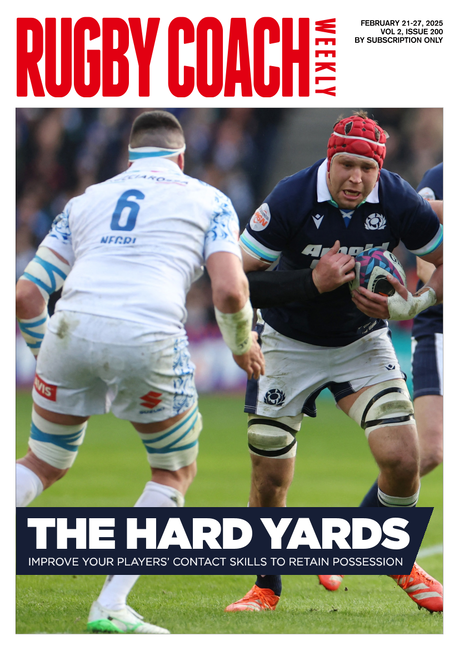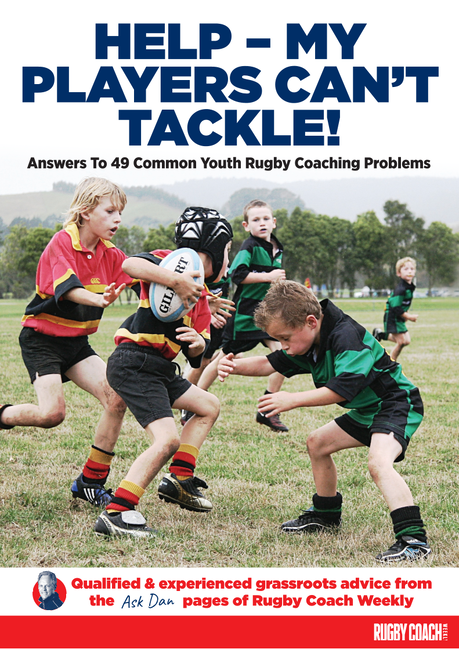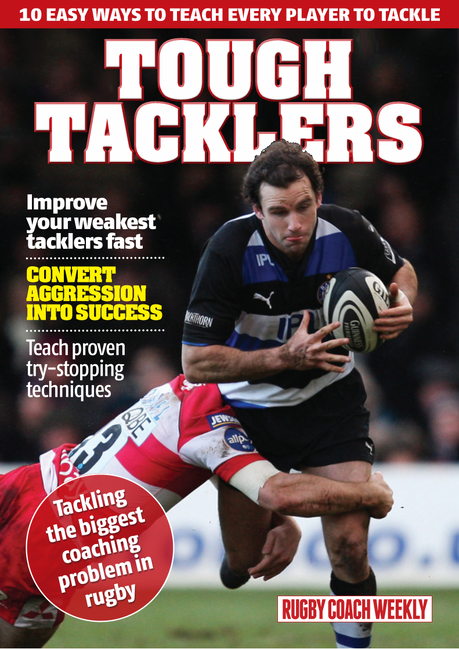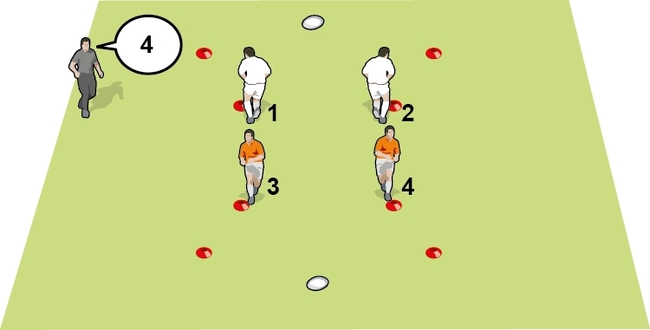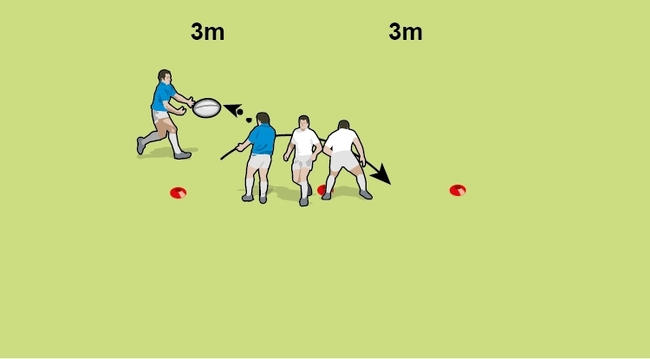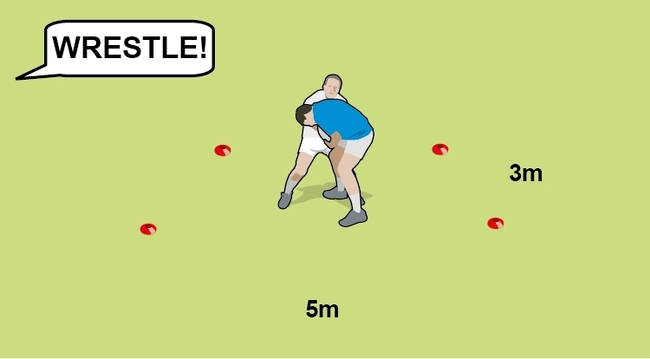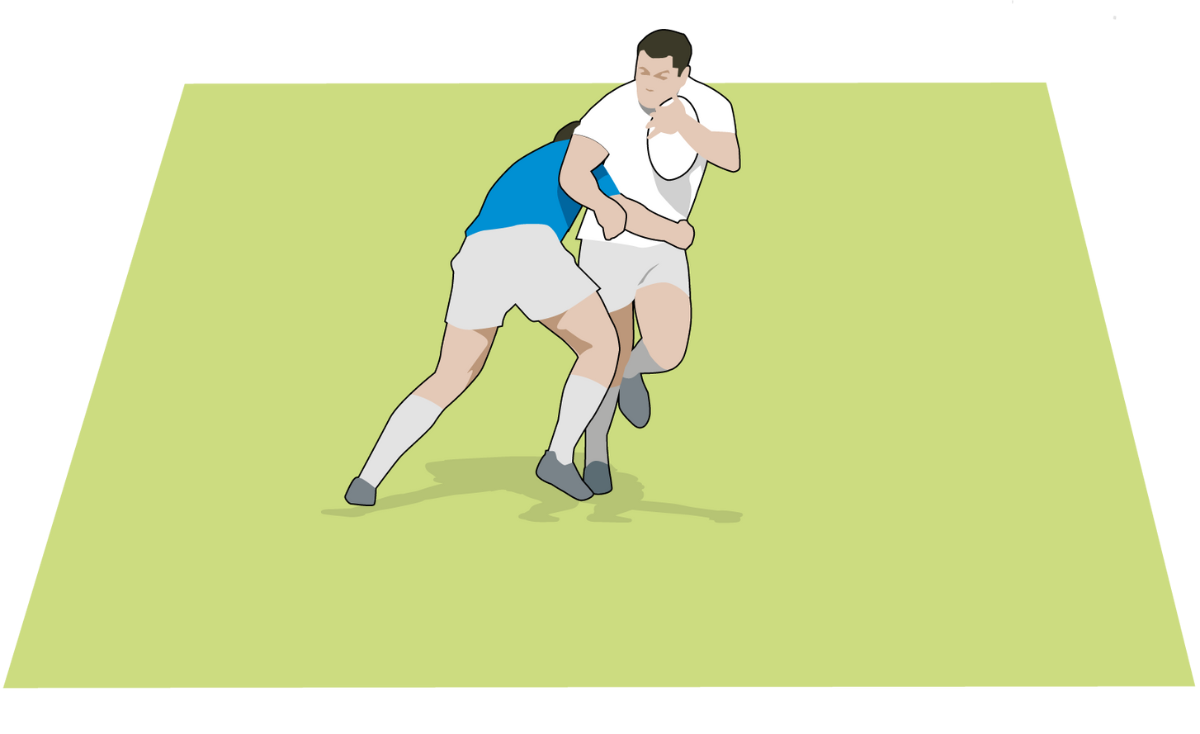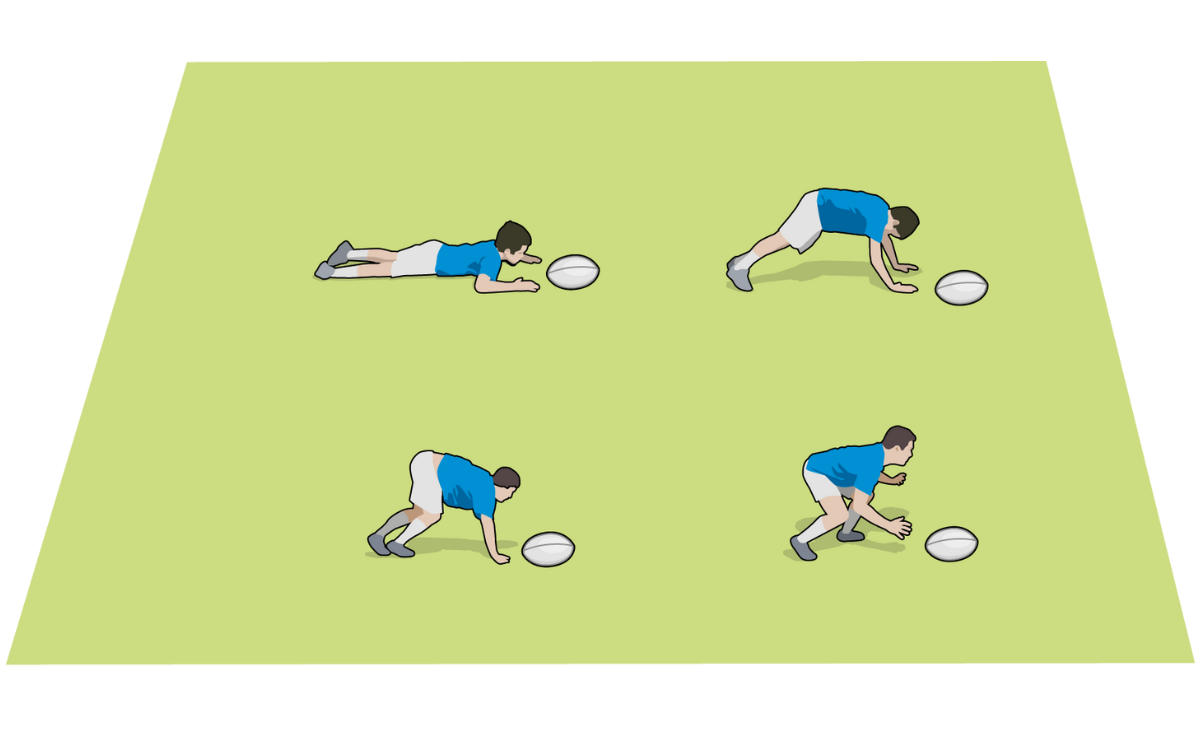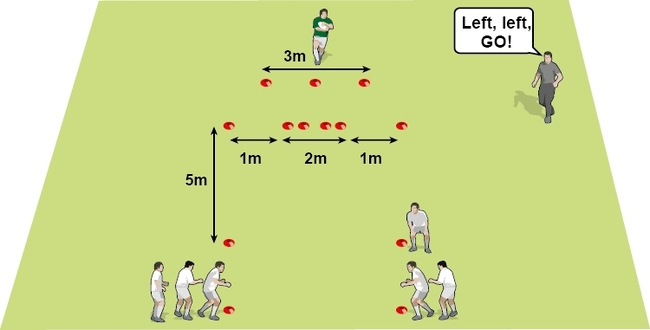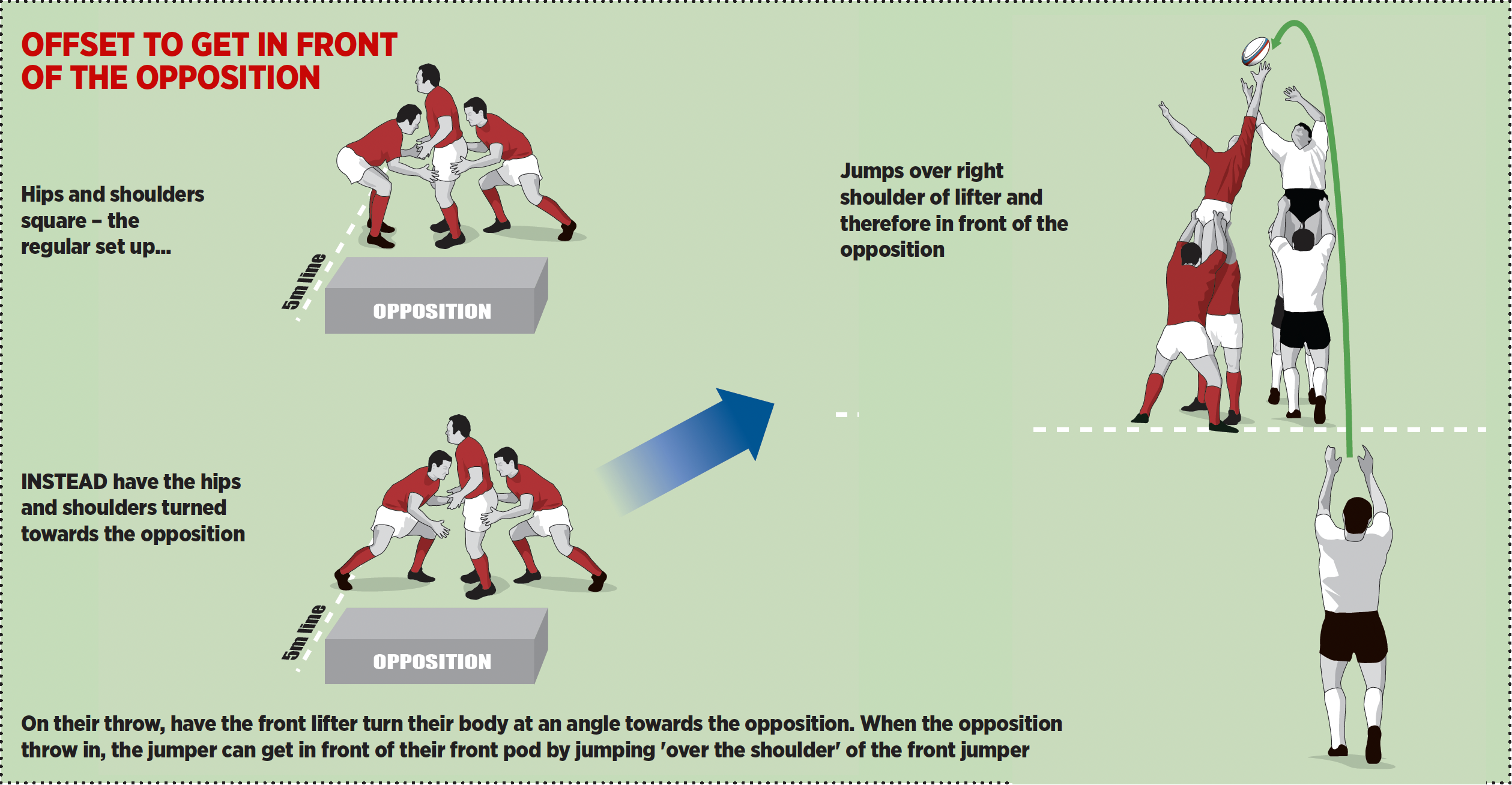My best tackle drill
This is my favourite tackle drill because it works on both shoulders and gets in lots of dynamic repetitions of the tackle. You can easily dial up and down the pace of the drill to suit the needs of your players. Ideally, you focus on one aspect of the tackle in this drill, running it for no more than five minutes at a time.
This is my favourite tackle drill because it works on both shoulders and gets in lots of dynamic repetitions of the tackle. You can easily dial up and down the pace of the drill to suit the needs of your players.
Ideally, you focus on one aspect of the tackle in this drill, running it for no more than five minutes at a time.
The key points for each time you run the drill could be:
- Tight head: the head is very close to the body of the ball carrier, meaning the shoulder is in tight.
- Tight grip: arms tightly wrapped around the ball carrier.
- Close feet: the feet split the stance of the ball carrier to create more leverage.
- Tight to ground: the head doesn’t leave the body of the ball carrier all the way to the ground as the tackler uses their leg drive.
- Track to tackle: the tackler moves dynamically to match the ball carrier’s movements.
- High-to-low: the tackler gets low, probably by bending their nearest knee at the last moment.
ACTIVITY
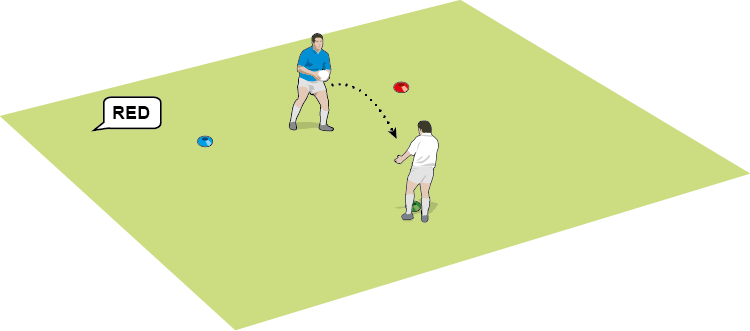
- Set up a triangle of cones, with a ball carrier standing between two different coloured cones. Another player stands opposite.
- Adjust the size of the triangle to suit your players, but 5m apart is a good starting size.
- Shout out the colour of one of the cones. The ball carrier throws the ball to the other player.
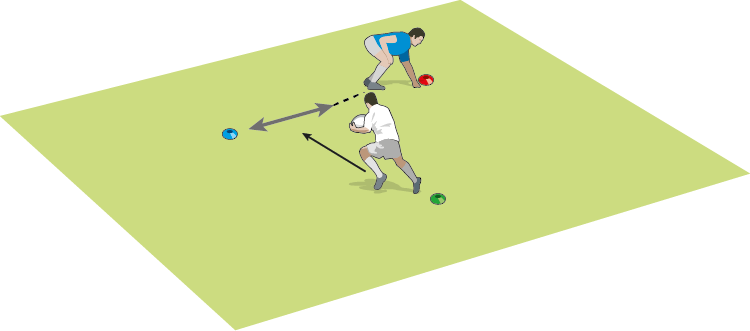
- The old ball carrier now moves to the side and touches the coloured coned called out.
- In the meantime, the new ball carrier moves to the gap between the other coloured cone and where the original ball carrier started.

- The old ball carrier moves across to make a tackle or part of a tackle.
The players then swap roles. Randomly calling out the two colours means the tackler is working on either shoulder.
This works well with up to six players, with two players behind each participant. The next player in line then moves into the starting position left behind.
RUNNING THE KEY POINTS
To start with, the players go at walking pace.
Focus on one point. For "tight head", "tight grip" and "close feet", the tackler doesn’t need to complete the tackle.
You can progress this exercise to jogging, but avoid having the ball carrier try to side-step the tackler if you are working on technique.
Related Files
Newsletter Sign Up
Coaches Testimonials

Gerald Kearney, Downtown Las Vegas Soccer Club

Paul Butler, Florida, USA

Rick Shields, Springboro, USA

Tony Green, Pierrefonds Titans, Quebec, Canada
Subscribe Today
Be a more effective, more successful rugby coach
In a recent survey 89% of subscribers said Rugby Coach Weekly makes them more confident, 91% said Rugby Coach Weekly makes them a more effective coach and 93% said Rugby Coach Weekly makes them more inspired.
Get Weekly Inspiration
All the latest techniques and approaches
Rugby Coach Weekly offers proven and easy to use rugby drills, coaching sessions, practice plans, small-sided games, warm-ups, training tips and advice.
We've been at the cutting edge of rugby coaching since we launched in 2005, creating resources for the grassroots youth coach, following best practice from around the world and insights from the professional game.
